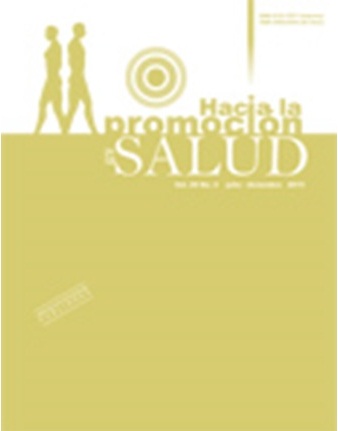Autores/as
Resumen
El ejercicio físico es uno de los factores fundamentales de la promoción de la salud. Su práctica regular, permite generar adaptaciones en diferentes sistemas como el cardiopulmonar y osteomuscular, para mejorar la condición y función del organismo. De las adaptaciones se derivan los beneficios. Al ejercicio se le han atribuido beneficios del orden físico, psicológico y social, en niños, adolescentes, adultos y ancianos; en personas sanas y enfermas; en los centros educativos y en la empresa. Los principales beneficios descritos son la reducción del peso corporal, disminución de la tasa de enfermedades del corazón, mejorar la resistencia física, incrementar la autoestima, controlar el estrés, disminuir el riesgo de algunos tipos de cáncer y rebajar los costos en salud. Para lograr los beneficios para la salud, el ejercicio debe ser practicado regularmente. Las actividades aconsejadas son las de tipo aeróbico, recreativas como caminata, trote, ciclismo, natación y danzas.
Palabras clave
Citas
AMERICAN COLLEGE OF SPORTS MEDICINE. The Recommended Quantity and Quality of Exercise for Developing and Maintaining Cardiorespiratory and Muscular Fitness in Healthy Adults. Medicine and Science in Sports and Exercise. 1990.
MORRIS,J,N. POLLARD, R. EVERITT, M,G. CHAVE,S,P. Vigorous Exercise In Leisure - Time : Protection against Coronary Heart Disease. The Lancet 1980; 2: 1207-1210.
PAFFENBARGUER R Et Al. Physical Activity, All-Cause Mortality, And Longevity Of College Alumni. N Engl J Med 1986 ; 314 : 605-13.
MATSUDO V.K. y COLS. Programa Agita Sao Paulo. Brasil 1998. (efectos benéficos del ejercicio físico).
MATSUDO V.K, Atividade Física É Saúde. Programa Agita Sao Paulo. 1998.
SCHENEIDER, W. Fitness teoría y práctica. Ed. Scriba SA. Barcelona 1993.
FLETCHER G.F. BLAIR S.N. BLUMENTAL J.et al. Statement on Exercise: Benefits and Recommendations for Physical Activity Programs for All Americans a Statement for Health Professionals by the Committe on Exercise and Cardiac Rehabilitation of the Council on Clinical Cardiology. American Heart Association. Circulation 1992:86:340-4.
Williams P. T. ARCH. Int. Med. 1997; 7: 157 -191
SANCHEZ J.D. Ejercicio y enfermedad cardiovascular. Acta colombiana de medicina del deporte. Vol 2.No 4 agosto de 1994.
AUSTIN, A, KENL, J. - Atherogenic lipoprotein phenotype: a proposed genetic market tor coronary heart disease risk. Circulation, 82, 495, 1990.
BERG, A KENL, J. Influence of maximun aerobic capacity and relative body weight on the lipoprotein profile in athletes. Artherosclerosis, 55.225.,1985.
NEWOSHOLME E. - Etfects of exercise on aspects of carbohydrate, fat and aminoacid mctabolism. Exercise, Fitness, And Health. Chapter 24 pag. 293-330. Human Kinetics Books 1990.
OSCAI, L. PALMER, w. - Muscle lipolysis during exercise-an update. Sports Med ., 6, 23, 1988.
LAUCHLIN M.H. Exercise training- induced coronary vascular adaptation. J. Appl Physiol. 73 (6): 2209-2223, 1992.
MATIZ H. Los factores de riesgo y la actividad física. Acta colombiana de medicina del deporte. Vol 1 No 1. 1993.
Report of the Surgeon General. Physical Activity and Health, Department of Health and Human Services U.S. 1996
FOX, L.E. Fisiología del deporte. 9ª. reimpresión, julio de 19993. Ed. Panamericana
VÁZQUEZ C Gabriel, ARCH INC México 1995
CÉSARMAN Eduardo. La vida es riesgo o la posibilidad de posponer el infarto. primera edición, 1978. Editorial diana, México.
STROOT Philippe. “Todo el mundo gana”. Salud mundial OMS. Ginebra, noviembre 1988.
American Heart Association. Heart and stroke facts. Dallas: American Heart association. National Center. 1992
ABRAMOV Valery. La carrera hacia la salud. Salud Mundial OMS. Ginebra. Noviembre, 1988.
ORTIZ U, Alvaro. Conferencia Seminario Control Médico del Entrenamiento Deportivo. Indeportes Antioquia, 9-10 de agosto de 2001 Medellín.
BLASCO, Tomás. Actividad física y salud. Ed. Martínez Roca. Barcelona 2000.
Clínicas Cardiológicas de Norteamérica. Interamericana McGrauw-Hill. 2/1993.


 PDF
PDF
 FLIP
FLIP






















